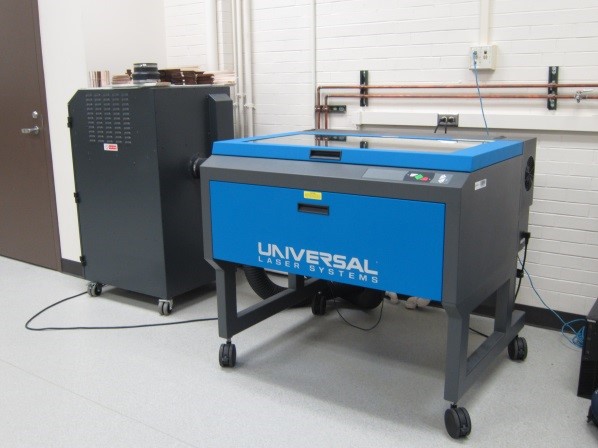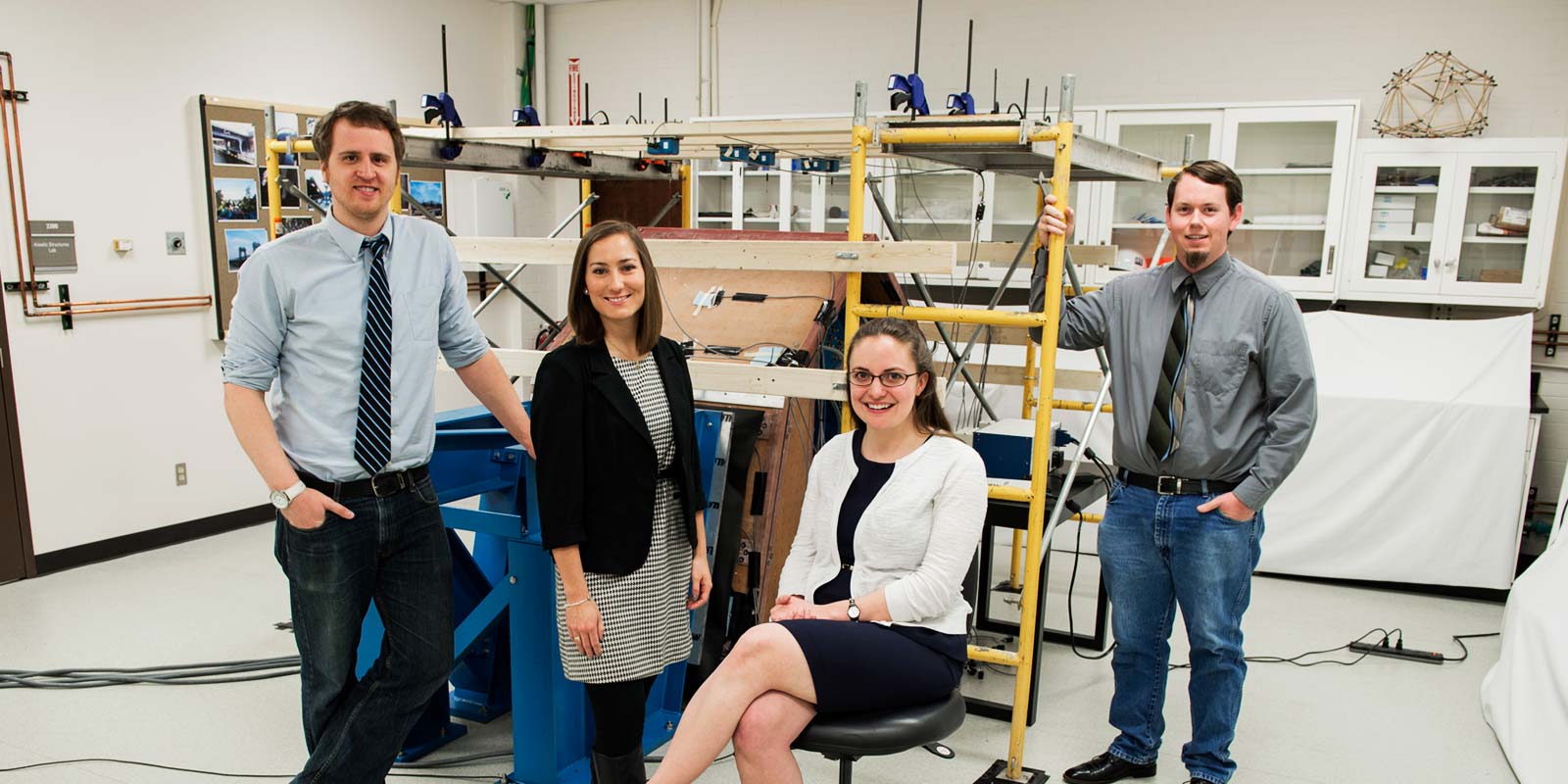Structural Systems Laboratory
This facility is a 2000 square foot, 30 foot high test hall with a 60 inch-thick reinforced concrete strong floor covering about half of the space. The laboratory allows for the testing of structural components and subassemblies at medium to large scale. Specialized equipment, know-how, and other resources are available to subject steel, concrete, and prestressed concrete structures to a variety of loading conditions from gravity, seismic, and fire effects.
The strong floor area is designed to provide a multipurpose test bed and includes anchor points spaced on a 40 in. grid. The test area and adjacent fabrication area are serviced by a 7.5-ton capacity overhead bridge crane. The laboratory is equipped with a number of closed-loop servo-controlled hydraulic actuators with force capacities varying between 55-220 kips and strokes varying between 3-10 in. A remote hydraulic power supply provides 90 gpm at a pressure of 3000 psi, allowing versatility for low and high frequency/magnitude loading. Two hydraulic universal tension-compression testing machines with force capacities of 660 kips and 60 kips are also available. The Structural Systems Laboratory is equipped with load, displacement, acceleration, strain, and temperature sensors and several computer-based, high-speed, high-resolution data measurement/acquisition/archiving systems that allow near simultaneous recording of about two hundred channels of instrumentation. The hydraulic actuators and the universal testing machines are also computer-controlled, allowing all aspects of data acquisition and actuator control to be orchestrated in a single test control program. The Structural Systems Laboratory also houses ancillary equipment for materials testing, concrete mixing and preparation tools, and a small machine shop for routine machining tasks. The laboratory is staffed by a technician who is available to assist researchers in all aspects of their experimental programs including set-up, instrumentation, testing, and post-test specimen demolition and disposal.
In addition to the loading capabilities under gravity and seismic effects, a portable gas fire furnace was recently constructed for the testing of structures under elevated temperatures from fire. The furnace is a one-of-a-kind skid-mounted movable gas furnace that can reach temperatures as high as 2400 degrees fahrenheit following the ASTM E119 time-temperature curve. Different from conventional ASTM E119 furnaces, the specimen is kept outside the furnace allowing easier visual inspections, monitoring of behavior, and application of gravity and lateral loads using the actuators and hydraulic power supply available in the laboratory. The burner and gas train skid assembly can be conveniently moved and stored when not in use.
Kinetic Structures Laboratory
The Kinetic Structures Laboratory is a 1200 square foot facility with computational, model-building, and experimental capabilities The laboratory features a Universal Laser Cutter (VLS 6.60 with a 32 x 18 in cutting bed) and a Stratasys 3-dimensional printer (uPrint SE Plus, 8 x 8 x 6 in build size, .010 or .013 in layer thickness) for rapid prototyping. A conventional instrumentation system, including a National Instruments data acquisition system, string pots, and load cells, is available for experimental testing.



For more information contact Dr. Yahya Kurama (ykurama@nd.edu) or Dr. Ashley Thrall (athrall@nd.edu)
